Themed collection Anisotropic nanomaterials

Front cover
Back cover
Back matter
Contents
Nanoscience at the RSC
(Non-carbon) anisotropic nanomaterials
This issue of Journal of Materials Chemistry highlights recent progress in anisotropic nanomaterials. Guest editor Luis Liz-Marzán introduces the issue and the importance of the field.

J. Mater. Chem., 2006,16, 3891-3892
https://doi.org/10.1039/B612854H
Chemical transformation: a powerful route to metal chalcogenide nanowires
We highlight the use of chemical transformation to convert trigonal selenium (t-Se) nanowires into single-crystal Ag2Se nanowires through a topotactic reaction and then into single-crystal CdSe nanowires via a cation-exchange reaction.
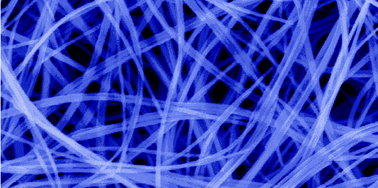
J. Mater. Chem., 2006,16, 3893-3897
https://doi.org/10.1039/B606682H
The role of twinning in shape evolution of anisotropic noble metal nanostructures
When matter is in the form of nanoparticles, shape becomes crucial in determining their physico-chemical properties. In this work, we show that twinning of nanoparticles plays a major role in determining nanoscale shapes.
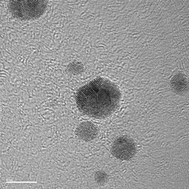
J. Mater. Chem., 2006,16, 3906-3919
https://doi.org/10.1039/B607128G
Near-field imaging of optical field and plasmon wavefunctions in metal nanoparticles
Near-field microscopic observation of anisotropic gold nanoparticles (rods and triangles) and aggregates allows us to visualize surface-plasmon wavefunctions and electric field enhancements.
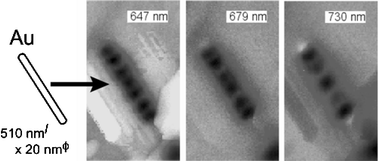
J. Mater. Chem., 2006,16, 3920-3928
https://doi.org/10.1039/B607147C
Growth of anisotropic one-dimensional ZnS nanostructures
This feature article covers the ZnS one-dimensional nanostructures that have been synthesized by a vapor–solid process, and focuses on the polar surface dominated growth phenomena and the understanding of their formation mechanisms.

J. Mater. Chem., 2006,16, 3898-3905
https://doi.org/10.1039/B607902B
Preparation and optical properties of silver chalcogenide coated gold nanorods
A thin layer of semiconductor material silver sulfide or selenide was coated onto gold nanorod surfaces by exposing Au/Ag core/shell nanorods to the corresponding anions under mild oxidative conditions.
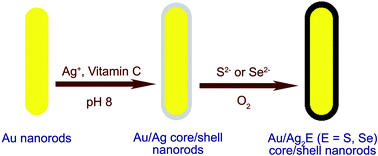
J. Mater. Chem., 2006,16, 3942-3945
https://doi.org/10.1039/B607106F
Influence of silver ions on the growth mode of platinum on gold nanorods
The presence or absence of Ag+ ions determines whether tip-coating or complete overcoating occurs during reduction of Pt on Au nanorods.
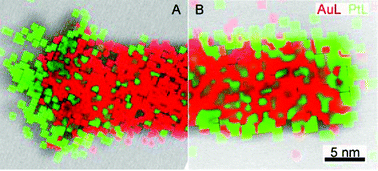
J. Mater. Chem., 2006,16, 3946-3951
https://doi.org/10.1039/B606887A
Crystal structure dependence of the elastic constants of gold nanorods
The elastic properties of single crystal gold nanorods with a [100] growth direction are studied using time-resolved spectroscopy; growth direction is shown to be important in determining the elastic properties of nanorods and nanowires.
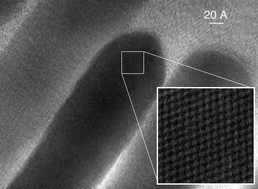
J. Mater. Chem., 2006,16, 3957-3963
https://doi.org/10.1039/B607364F
Anisotropic calcium phosphate nanoparticles coated with 2-carboxyethylphosphonic acid
Synthetic principles of quantum dot synthesis were applied to the preparation of anisotropic platelet-like calcium phosphate nanocolloids that could be used in bone regeneration.
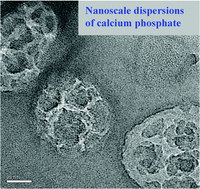
J. Mater. Chem., 2006,16, 3964-3968
https://doi.org/10.1039/B608073A
High-sensitivity hydrocarbon sensors based on tungsten oxide nanowires
Nanowires of WO2.72 are found to be good hydrocarbon sensors, particularly when impregnated with Pt, the sensitivity reaching a value of ∼106 for 2000 ppm of LPG in the 100–200 °C range.
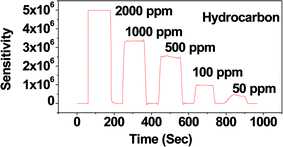
J. Mater. Chem., 2006,16, 3936-3941
https://doi.org/10.1039/B607012B
Ligand and solvent effects in the nonaqueous synthesis of highly ordered anisotropic tungsten oxide nanostructures
Tungsten oxide nanoplatelets just a few Ångstroms in thickness self-assemble into highly organized anisotropic hybrid nanostructures over several length scales in the presence of coordinating organic species.
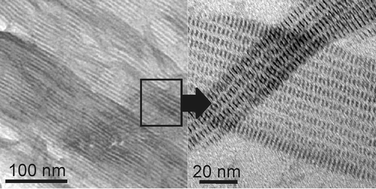
J. Mater. Chem., 2006,16, 3969-3975
https://doi.org/10.1039/B607008F
Selective reactions on the tips of colloidal semiconductor nanorods
A strategy to access several types of Au-tipped dumbbell-like heterostructures is presented, involving the selective oxidation of PbSe or CdTe sacrificial domains, initially grown on CdSe and CdS nanorods, with a Au(III) complex.

J. Mater. Chem., 2006,16, 3952-3956
https://doi.org/10.1039/B607217H
Bimetallic silver–gold nanowires: fabrication and use in surface-enhanced Raman scattering
Bimetallic silver-gold nanowires are good substrates for surface-enhanced Raman spectroscopy.
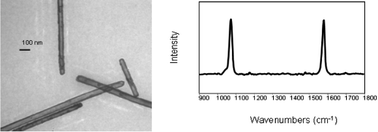
J. Mater. Chem., 2006,16, 3929-3935
https://doi.org/10.1039/B607116C
About this collection
The Journal of Materials Chemistry's latest theme issue, on anisotropic nanomaterials, has been published. The issue's guest editor is Luis Liz-Marzan of the University of Vigo, Spain.
"The authors contributing to this themed issue are at the absolute forefront of the field"- Luis Liz-MarzanCommenting on the significance of the subject chosen for the theme issue, Liz-Marzan said "Size control in the nanometre scale has been achieved for a wide range of materials. However, during the past 5 years, a large amount of research has been devoted to control the shape of nanomaterials, since it has been observed that in most cases it has a much more profound effect than size on materials properties. For this reason, large developments of device design and fabrication are expected to arise from anisotropic nanomaterials. Although the scope of the issue was in principle rather broad, the reader will find that there is a clear bias toward anisotropic nanoparticles, which is probably the area where the largest development is taking place."
Luis Liz-Marzan He continued: "The authors contributing to this themed issue are at the absolute forefront of the field and have largely contributed to its development. Not only well-established leaders have been invited, but also young researchers who have already delivered important contributions to the field and are pushing very strongly with their recently established groups."
"I strongly encourage the J. Mater. Chem. readers to pay attention to this selection of papers, in order to get a good insight about the state of the art in the field of anisotropic nanomaterials," Liz-Marzan wrote in his editorial.